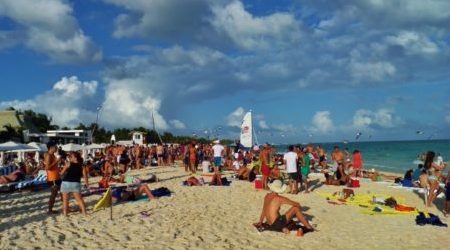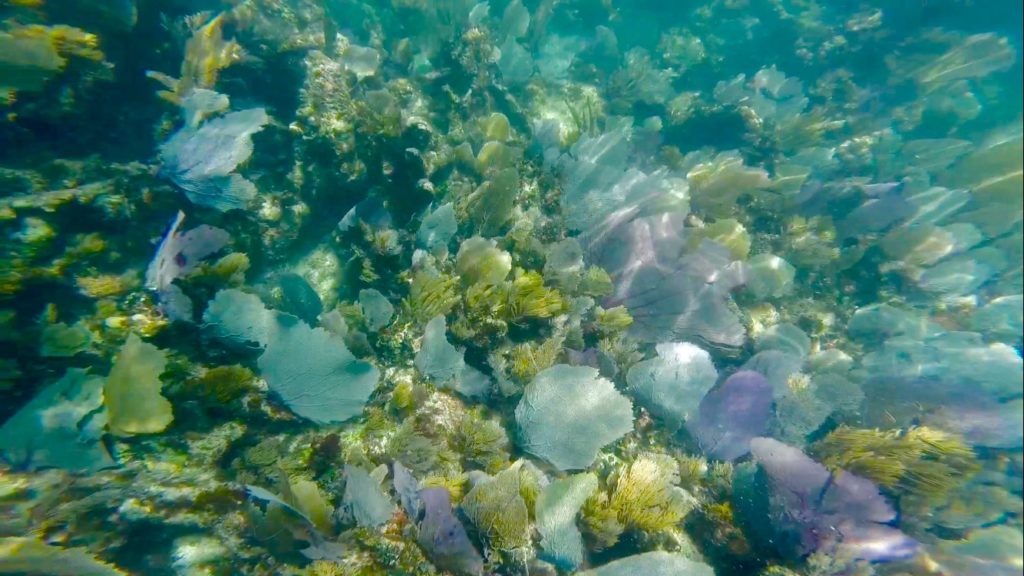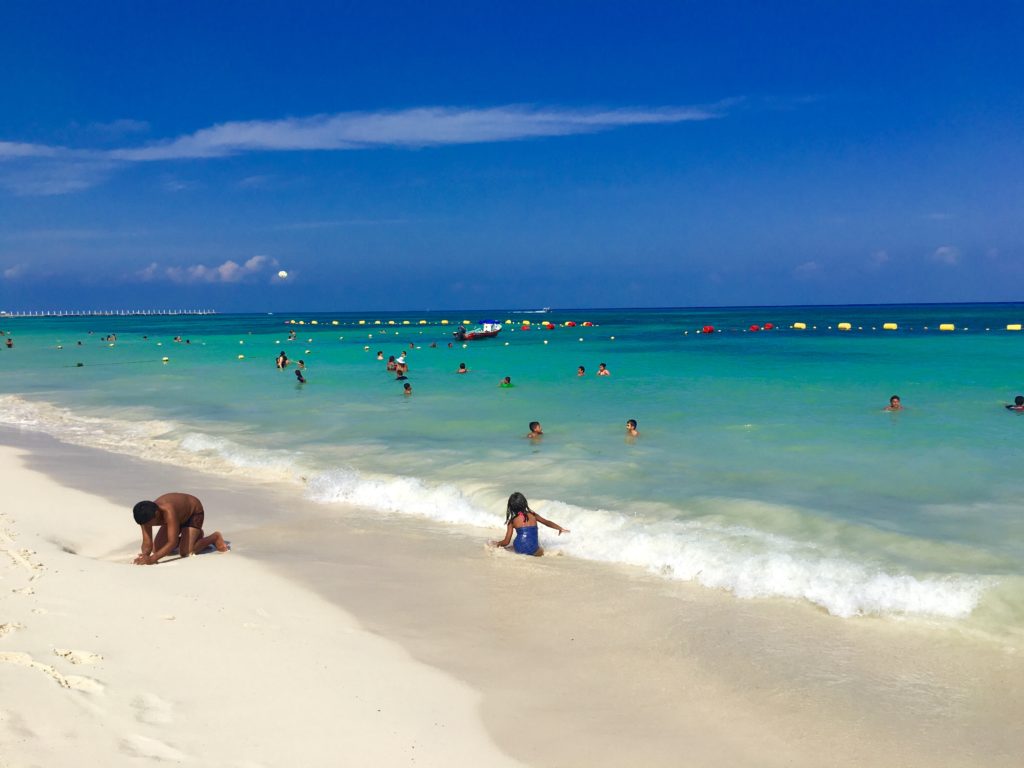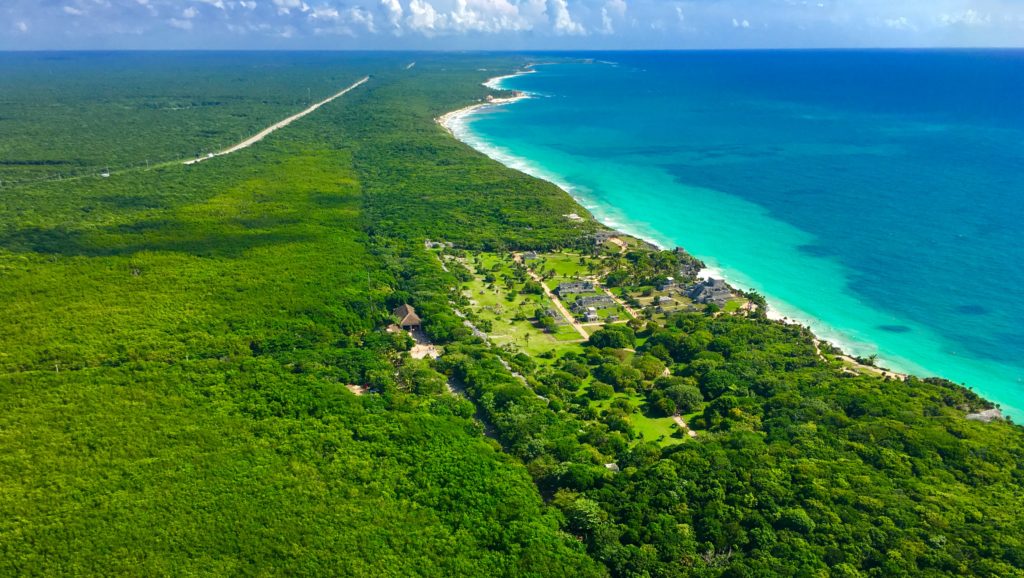
Preventing overtourism in the Riviera Maya
Around the globe people are taking note about overtourism. In places like Venice, Italy, Barcelona, Spain, and Boracay, Philippines the stress of too many tourist are pushing residents and resources to a limit. Residents are asking for changes and governments are scrambling to come up with regulations.
With access to affordable flights for most people, it is easy to jet away to that Instgramable destination. The most popular destinations though, are only large enough for a limited amount people. Natural resources become stretched, environmental issues are raised and residents are pushing back.
Since Playa Del Carmen and the Riviera Maya are popular destinations, can there be a breaking point? What places here are seeing a strain now due to high tourist visitation? What is being done now to make sure resources are in place for an increasing tourist demand? How can we personally do something to reduce our impact and keep this beautiful destination for being on the list of places with overtourism problems? We will discuss this all below.
What places in our area are most at risk to overtourism?
Here are some of the more at risk places which tend to be environmentally sensitive areas. We could include how tourism effect local culture and traditions but that is a whole other article.
-
Akumal and swimming with the turtles
It seems that every week we get emails asking about swimming with the turtles. This has become so popular that in recent years there have been many problems with overtourism. Too many people were coming. Efforts have been made to limited the amount of tours daily as well as other restrictions. It got to the point that people would sneak out to snorkel without guides or some tour guides would payoff the guards to allow an extra tour in.
How you can help
There are several other places where you can visit sea turtle and even swim with them. Tulum for example has a fisherman’s cooperative that organizes tours of the reef. Here you have a good chance to see a turtle. Puerto Morales also has a large reef where you can see turtles while swimming. Xcaret Park has a whole sea turtle conservation program. You can see them and learn about them there.
If you do go to Akumal, make sure you reserve in advance with a registered tour company like this. If you try to book in the last minute, you might find it all reserved.
-
The reefs
Off the coast of the Riviera Maya is the Mesoamerican Reef. This is the second largest in the world. Reefs around the world are being damaged not only by overtourism but also the temperature of the water.
How you can help
Be mindful when snorkeling or diving to not touch or take anything. Wear biodegradable sunscreen and bug sprays. When on the shore be mindful of trash you have so it does not blow into the ocean.

-
Sea turtle nesting areas
Our part of Mexico is home to several endangered sea turtle species. Nesting areas along the beaches have been destroyed by development. What is left is more remote and undeveloped coastline.
How you can help
Be mindful of beach areas roped off. You might find areas on the East side of Cozumel, Xcacel Beach, Akumal Beach, Isla Holbox and others. Respect these closed off areas to visitors. You can also volunteer or donate to sea turtle research and conservation. You can do so here with this reputable organization.
-
The beaches
With development, cutting of the mangroves, pollution and other factors the beautiful beaches of the Riviera Maya are prone to overtourism.
What you can do to help
In more remote stretches of the beach, you will notice a lot of plastic washing up. This is not necessarily from the local area but rather just plastic in the ocean finding its way to shore. Why not help out a little and collect some.
Leave nothing behind when you visit the beach. Leaving cigarette butts, cups and plastic all damages the environment.
-
Holbox Island
This fragile strip of an island is beautiful but also very susceptible to overtourism. Its popularity has been growing in past years. More hotels, visitors, residents and everything that goes with it are putting a strain on the island. Recently the island put a temporary hold on new guest while the sewer system was being worked on. Added infrastructure is needed to accommodate the current amounts of tourist and even more will be needed if tourism continues to grow on Holbox.
What you can do to avoid overtourism here
Visiting during the off-peak months will help. Whale shark season tends to be one of the busiest times of the year here. This is around mid-May to mid-September.
When you are there be mindful about water and electrical consumption. Avoid going off trail which can trample natural growth. Respect turtle nesting areas. Support ecotourism like nearby Solferino.
How overtourism hurts locals
Living in a beautiful location is very rewarding but when you are limited in access or the costs start to push you out, it starts to be a problem. Here are some ways that high tourism is affecting locals.
Airbnb and other home stay booking sites
When websites started offing homeowners the opportunity rent out their properties for profit, new doors were opened. However, for the majority that do not own a home and need to rent, this means added competition for a place to live.
What we have seen in Playa Del Carmen in the past few years is the downtown transform into a residential neighborhood for weekly guest. Owners of apartments prefer to rent out on a nightly or weekly basis and make more money rather than rent to a resident. The entry level one bedroom in the center used to be around 5000/6000 pesos a month. Now it is hard to find a place for 10,000 pesos.
This has pushed locals out of the downtown and further inland. The fabric of a beachside community becomes a façade of familiar buildings and houses but not faces.
Tourism moving faster than the law
Hotels are businesses that are well regulated. They pay taxes that help promote the area for tourism and in return they have guest. This reciprocal cycle is broken when people stay at rentals that operate outside the law.
It is no secret that a lot of people enjoy the extra income from renting out their places. Some declare this as income and pay taxes while others do not. It has become hard for governments to move fast enough to try to regulate these new business model.
In Playa Del Carmen a vast majority buy a condo as an investment and perhaps retire later. If the government was to tighten down and regulate the home rental market this can scare people away from investing. This would lead in a drop in sales which leads to less building which leads to less jobs and growth. It is kind of a catch 21 situation.
What can be a solution?
Some places like Barcelona, Spain have made it mandatory to have a license to rent out for less than one month at a time. This means that most tourist stays would be covered in this and it would be more regulated. This could work for Playa Del Carmen. While this might make some people think about investing, it can be reassuring that concrete laws are in places. It can also assure people that more sustainable development is coming. Local residents would also gain a little leverage in looking for a place to live.
Commuting to paradise
Growth of Playa Del Carmen especially in the downtown has pushed more residents to further out neighborhoods. This means added hours to the month in transportation time. It also possibly means investing in a scooter or car or relying on the basic services of public transport.
Since there is limited public transportation options in Playa Del Carmen the average commuting time is near 30 minutes each way. So that can average upwards of 6 hours week (considering many people work 5 1/2 days a week).
Restricted access to locals in the Riviera Maya and Playa Del Carmen
All beaches in Mexico are public but access to them is not. If the land in front of the beach is private, people do not have the right to cross the land to access the beach. For example, there is a stretch of beach just outside of Playa that has no public access for 16 km (10 miles).
Other areas have a beach club which allows the public to pass over the land, but this means paying a fee to access the beach. This can mean a family of four might pay up to one day’s wage to access the local beach.
Getting squeezed out by tourism
Just north of Playa there is a beach called Xcalacoco. This had been a beach that locals liked visiting. At this beach there are several large hotels. The small road leading 2 km from the highway had limited parking. When the area was “improved” there was even less parking. This meant locals wanting to go to the beach either had to find a place to park or public bus and walk the rest of the way to the beach. This is just one example of roadblocks for accessing the natural beauty of the area.
There is an general unwritten rule that large resorts don’t like locals hanging out on the beach in front of their hotel. Resorts have guards that keep an eye on guest and make sure people don’t enter the hotel property that are not staying there. There usually are not too many issues at the beach but as more of the beachfront is developed and locals get squeezed for access, we can expect issues to arise.
What can be a solution?
Since some places charge for beach access here is one possible solution. For example, visits to archeological sites in Mexico are free to residents on Sundays and at a discount other day. Sunday just happens to be when most people have off from work. Free or discounted access to locals for cultural and natural parks can make it fair between tourist and locals.
Preserving access to beaches and improving transportation options will help relive parking and space issues at the beach.

What is being done now to sustain tourism?
There is some good news coming out of the Riviera Maya. With each generation, people are becoming more environmentally aware. This is brining awareness to recycling and learning about the natural cycles that sustain the natural health of our area.
Eco parks are doing their part
As much as people like to dislike big companies, the large company of Xcaret is doing a lot for sustainable tourism. For example, they have stopped using glossy maps to hand out in their parks and drinking straws in their restaurants. They are growing some of their own food, composting, providing educational programs and have community outreach.
Most of their parks are adding attractions each year. This accommodates more tourist but keep the parks ecofriendly.
Limited daily access
Isla Contoy is one naturally beautiful island near Isla Mujeres. It can only be visiting for the day because it is just a nature preserve. There is a limit to just 200 people per day. This has helped preserve this place as pristine.
How can you help not kill the Riviera Maya
The language we use “kill” might seem harsh, but it is that serious. Damage done by overtourism can take years to recover from if possible. Often in places where overtourism happens, there is not time to recover because economic factors dictate reopening sooner than later. The key is looking at the warning signs and preventing it before it is too late. Here are some ways you can help.
Get out and explore on your own
Everyone knows about Chichen Itza and other top tourist sights in our area. A destination in the top 10 list compared with number 11 or 12 can be as much as 90% more popular since most people only have time to see “the best spots” or most promoted. However, there are hundreds of attractions in the Playa Del Carmen and Riviera Maya areas.
Second tier sights can be just as rewarding if not more if you take the time to go to them. The first step is to know what is here. We are always out exploring to tell you about out of the way places that most mass tourism sights don’t tell you about. For example, the map below has clickable destination that you can explore online.
Follow instructions
Nature is delicate especialy when walked on or touched repeatedly. Many tours and local spots that tourist visit have posted requirements and instructions. These are posted to help preserve the natural places and avoid the effects of overtourism. Here are a few notable things to observe when visiting the Riviera Maya.
- If visiting the coral reefs, do not touch them. We have been on many tours where someone touches or accidently kicks the coral with a flipper. This can kill the coral or damage it is taking years to repair.
- Observe the chemical free sunscreen request. Especially at-risk places like cenotes and reefs are damaged by the chemicals. Don’t just think “It is just me this once” or “I don’t want to spend more for nontoxic sunscreen“. We have revisited cenotes and see a difference in quality of the water. Some cenotes do not effectively state that you should not wear the sunscreen and some staff does not mention it. However, we can all do our part to keep these beautiful places clean.
Lower your impact of your vacation
Here are a few suggestions how we all can lower the effect of our travels. Anyone of these can help reduce the effects of overtourism.
- If you are staying in a condo rental, be considerate of the neighbors. Many buildings are mixed use with residents and tourist.
- Look at taking a vacation in a lower season. This can save you money at lower peak times. The nice thing about the Riviera Maya is the weather is good year-round, so it does not matter as much when you come.
- In your hotel, consider energy usage especially when not in the room. Have towels and linens washed only when needed.
- Limit take out containers, drinking straws and unnecessary trash that will add to the trash.
- Buy local. Not only are your supporting local craftsmen but you are helping preserve local culture in a small way.
- Ask questions and comment. Hold tour companies and hotels accountable for sustainable and clean practices. If managers hear that people are aware and comment, they will be more likely to keep or implement good sustainable policies.
- Don’t expect everything to be just like where you came from. Embrace local culture. This can be with regard to food, hotels, and types of things you will see.
Conclusion
The Riviera Maya and all the places that make it up are special. So many of you love coming yearly or even more often. It is no doubt you have seen Playa Del Carmen and the area change. It is growing as a place to live and vacation in. The lessons are out there with what can happen with overtourism. We can all work to preserve the area and make sure that tourism does not become a breaking point for the area.
Feel free to leave your comments below about ideas how tourism can keep benefiting the area and not damage it.
If you have enjoyed this article you might like to read our article on ecotourism in Mexico here.



Is there a pay it forward scheme that tourists could use to pay a local family’s beach access fee? I would be happy to contribute to something like that when I visit in August.
Hello Gail
That is a very nice thought. There is no arrangement for this but if you go to one of the beaches like Xpu Ha you can always offer to pay for a family. If you also come across a nice family on your travels, you can offer to do something nice for them.